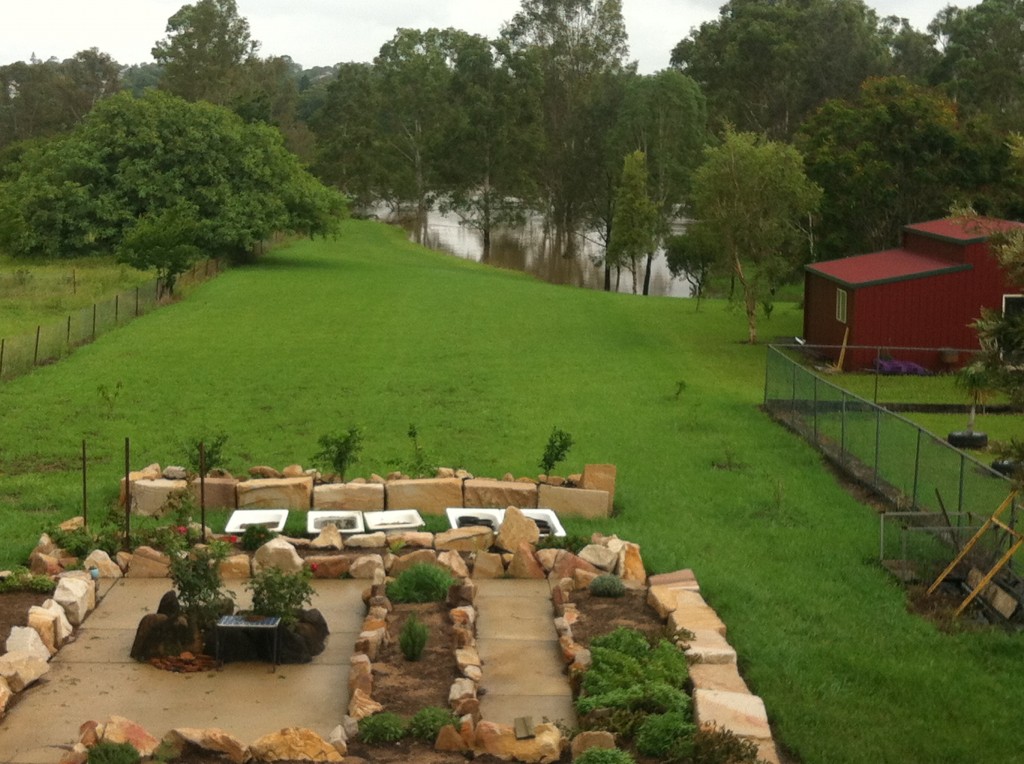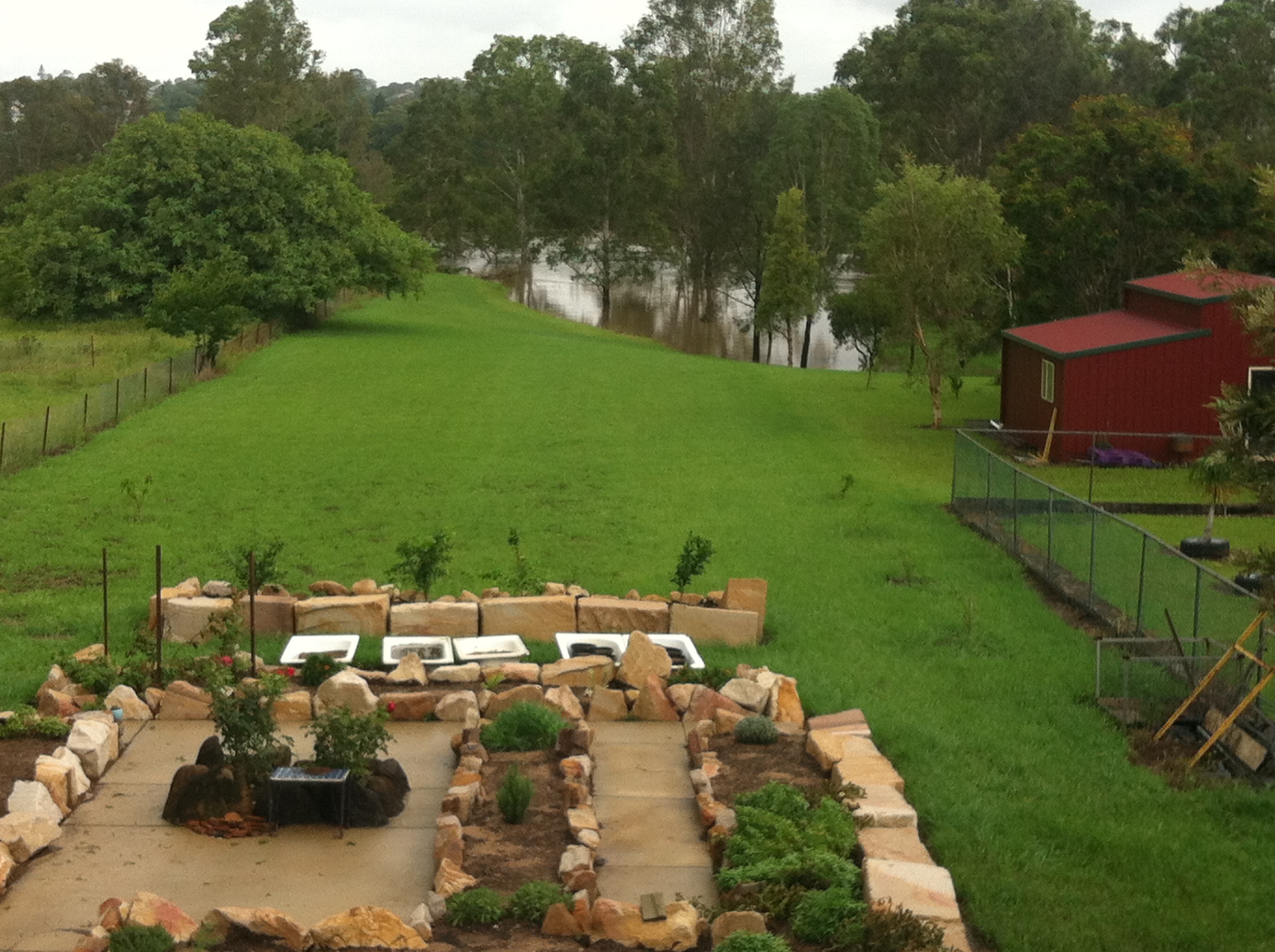The 2013 Brisbane flood: An Australia Day tale of three beers

I will caveat that my thoughts on the 2013 Brisbane flood event are nothing like my 2011 flood story. I did not get flooded, and my heart goes out to those who experienced a repeat of a painful event just as they were getting back on their feet.
These are my reflections of the day as it unfolded and on community. Take from it what you will.
The event
This year was different from 2011 in a few ways. The first is that it seemed to sneak up on us. The 2011 event was preceded by the wettest December since 1859. This year we were commenting on how dry it had been and worried about our garden dying from the heat just days prior to the weekend.
The second difference was that response networks were more prepared. Council drove people towards Facebook when the council website was not prepared for the volumes of people downloading predicted flood addresses. We had learned from last time, through embedded experience of 55,000 volunteers, through fresh pain of over 30 deaths and tens of thousands of homes inundated by flood waters, and through research producing 226 page reports on Dam operations.
This leads us to a third difference to 2011; that we did remember. The concern rose across the community at the same rate as the river. My wife in particular was faced with yet again putting another year of her life on hold to rebuild. We spent the morning moving things out of the shed and watching various reports and predictions, filtering out the noise to determine the impact.
Flooding: more than just numbers
As I watched the water creep onto our property, I reflected on images I saw just the week prior of 150,000 displaced as floods spread through Mozambique and the same number displaced in the Philippians as flood waters submerged over fifteen villages. To put it in perspective, 150,000 is the population of all of Ipswich, Queensland, the area in which I live. The 2013 Queensland flood displaced 7,500 people a few hours north in Bundaberg and around 30 homes were flooded in Ipswich. It is all academic, as numbers meaning nothing unless a connection is made to the people who are represented by the figures.
I feel trite even writing this post, as I am aware of businesses that were just recovering and will now never recover after being flooded yet again. There are homes who lost everything in 2011 and again in 2013 and were refused insurance. One of my Facebook friends made a point of highlighting the aftermath of depression and suicide forgotten by a media that moves on to the next catastrophe:
Poor Bundaberg, my hometown 🙁 This is really so devastating, the recovery will be a mammoth task. Speaking to my dad today (who works in emergency services), he said one of the saddest consequences of this type of disaster is the number of suicides that will follow in the coming months. And most of these will go unreported in the mainstream media. Bundaberg saw an increased number after the 2011 floods and will happen again. If you can donate to help, please do! http://www.redcross.org.au/qld-floods-2013.aspx
Another number thrown around was that this was a 1 in 20 year event. I am unsure what to do with this statistic, considering we were flooded just two years prior. Does this mean we have bought ourselves another 40 years? Are we just really lucky, or unlucky, at odds? Or perhaps as noted by scientists the impact of climate change throws any one-in-whatever year predictions out the window.
The final numbers that I focus on this year are the predicted flood heights of the river. In 2011, they say the water reached 19.4 metres. This number alone meant nothing to me, until I discovered that 19.4 equals waist high in my living room. The number this year was a predicted 15 metres, which actually peaked at 13.9 metres. Not being an engineer, I wondered if I had to do some ground displacement calculation to determine how much lower this would be on my property or if I did indeed draw a vertical line down. The latter appears to be the way, and I now know the tree in my backyard that represents 13.9.
Australian community: A journey through three beers
In 2011, I felt the need to share everything. This time around, I tried my best to “be in the moment”. My phone was away most of the time and I participated in the event as it unfolded. The end result is that I have a few less pictures to share but I come away with a greater awareness and a few beers.
We spent most of the morning boxing things to move upstairs and taking pictures for insurance. Around ten in the morning, we had a good friend Ariane help us move some stuff under the house and we loaded her car up with things she was storing at our place while she renovated. After helping Ariane and her partner unload the tables and chests at her place, they invited me in for a tea. Unfortunately, the power was out, so we settled on a couple of beers.
While early in the morning, I had been up since 4:00 so I figured it was OK. It was an imported beer that suited our conversation over the next half hour or so about the extent that being in community is associated with personal happiness. We did not agree on an answer, but perhaps the experience itself was indicative as I left happier than when I arrived and not only because of the beer.
I arrived home to find that Theresa had popped a beer in the esky along with a couple of Ginger Beers for her and my daughter. We sat on our deck and ate a lunch that was determined by whatever was the most expensive and perishable from the now powerless refrigerator. We finished our drinks over a board game and conversations of “what ifs”, looking through the window behind us every 10 minutes like hitting refresh on a computer screen to see if the river was progressing up our yard.
We had six hours to go before the river peaked. We had yet to discover what “15 metres” meant and leaving the house was not really an option. So we had some laughs and played games in a setting that was surreal, both being in the moment and waiting for resolution.
My neighbor Jason was in a similar situation, except he had sent his family to higher ground and had little to do except wander down to the river and back again. So around 3:00 I invited myself down for a game of pool in his shed, and yes, he broke out a couple of beers. We played pool, me not very well, and talked little of the waters a few feet from where we were standing. The river was no longer rising at any noticeable rate and it was becoming clear that “she’d be right, mate”.
We ended the evening with a Bar B Q of lamb chops and steaks, again clearing out what might go to waste if the power was to be out for a few days. We went home, played a game of cards over candlelight, and called it an early night.
My day was uneventful compared to many who lost everything. I am grateful for the Australia Day reminder that being Australian is not about nationality as much as it is about being in community. I am grateful for my wife Theresa who had the foresight and tenacity to rebuild a house that would better weather a flood in the event it happened again. I am grateful for friends who reached out to us during the flood, and for those who supported others who were not so fortunate.
If you have a story different to mine and you were impacted by the floods, my heart goes out to you. If you have a story similar to mine and you were spared, I encourage you to reflect on what you can be grateful for. If you are able, consider converting that gratitude into support through channels such as the Red Cross appeal or your local collection centre. After that, grab a mate, pop open a beer (or your substitute of choice), and share in the community we are blessed to be a part of.


“My phone was away most of the time and I participated in the event as it unfolded.”
So… if checking your phone every 10 mins instead of every 5 mins is putting your phone away for most of the time, then yes, you did. 😉 Had we an unlimited supply of electricity, I’m not convinced this would have happened. If there are to be cyborg volunteers, you will no doubt be the first and you will have a phone installed in your body somewhere. 😛
Like meters on a river, the term “most” is relative. 🙂